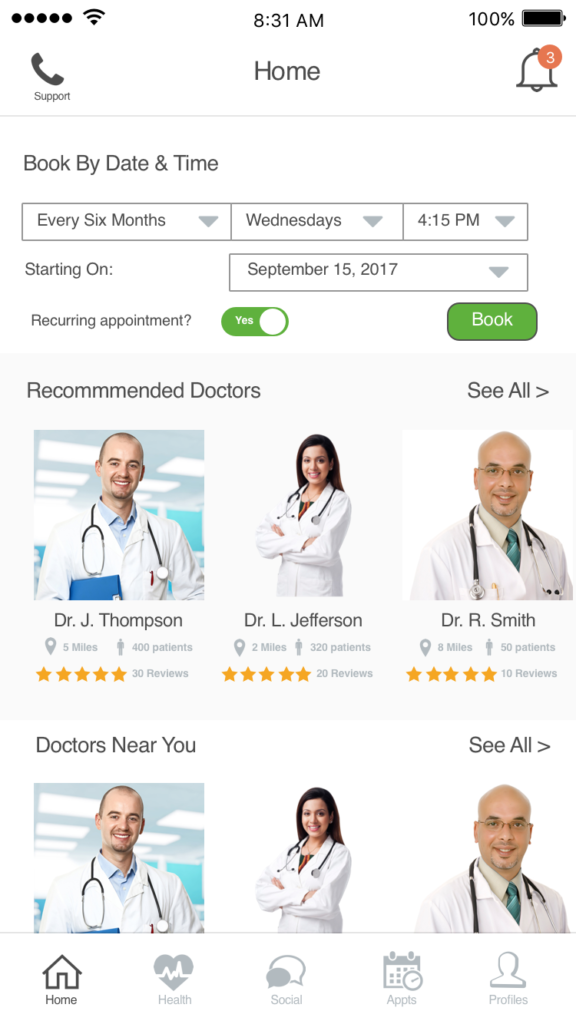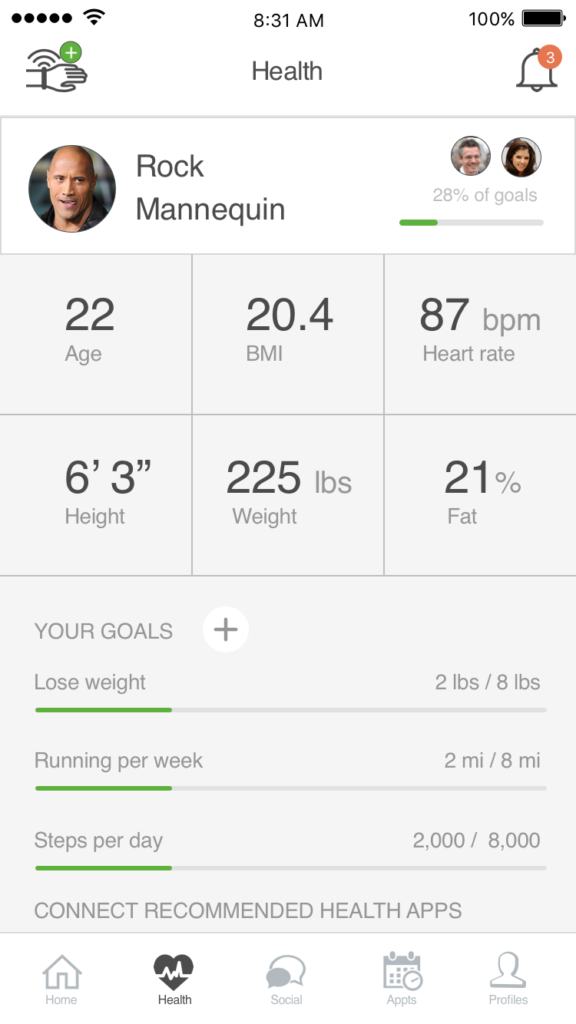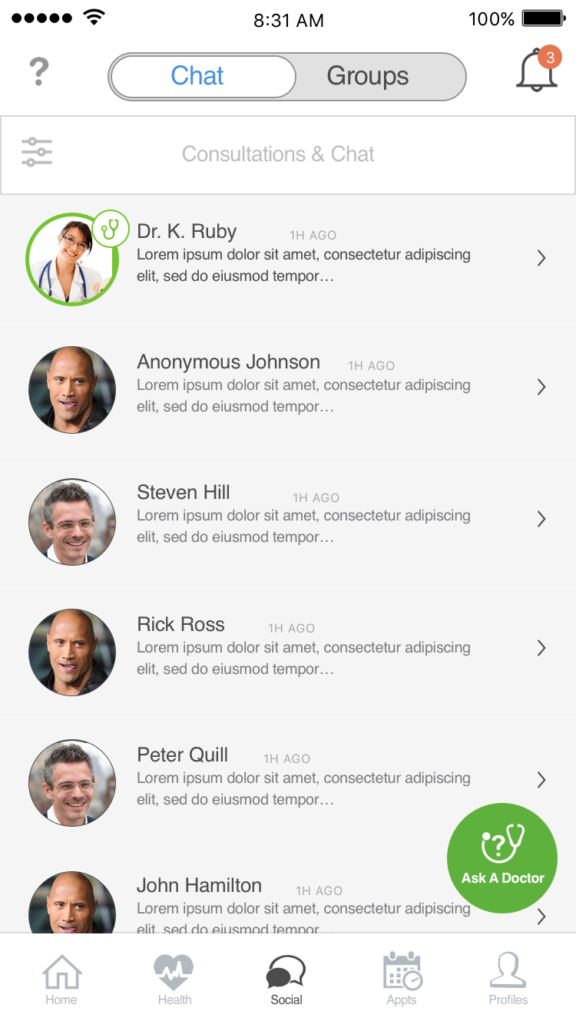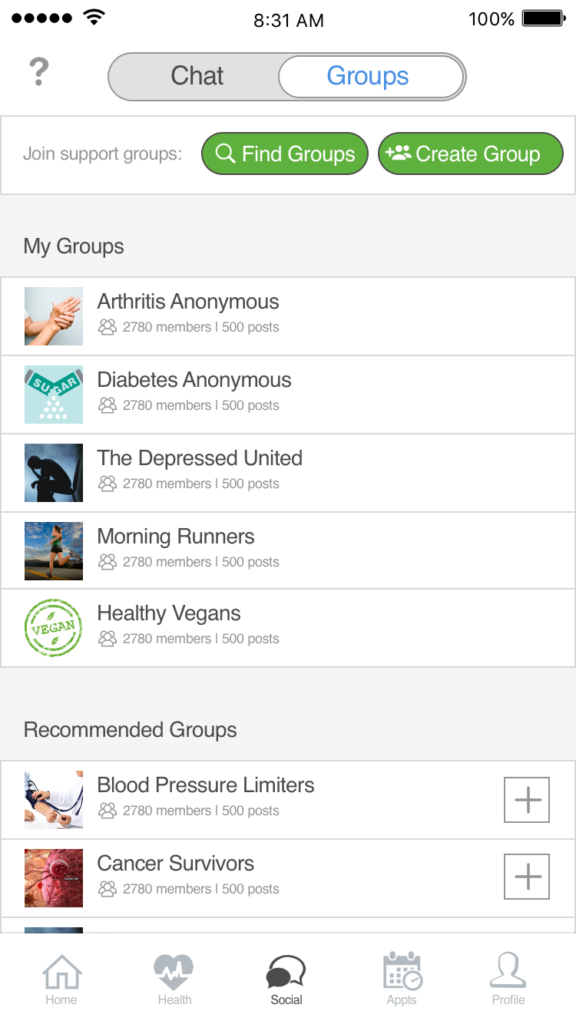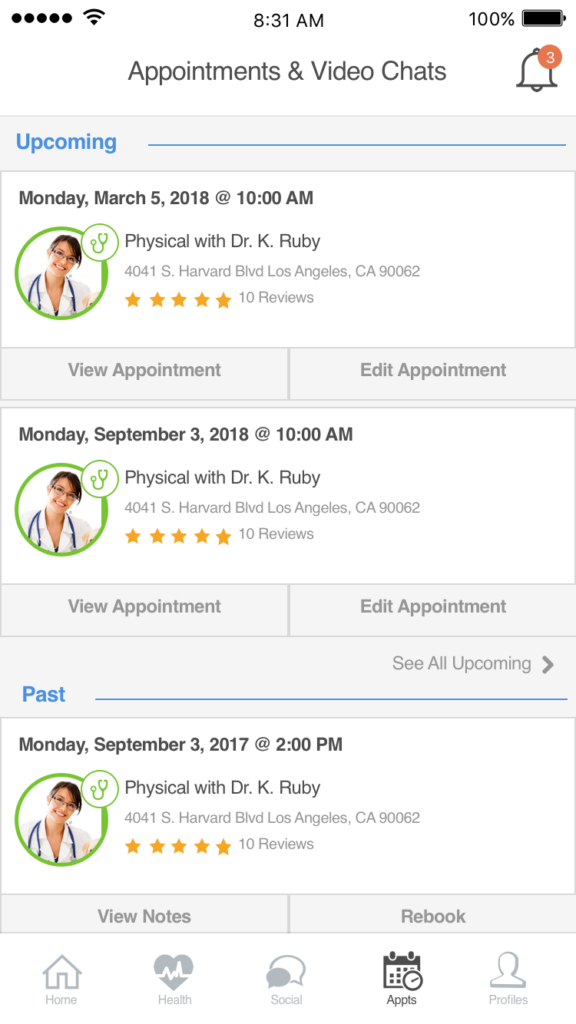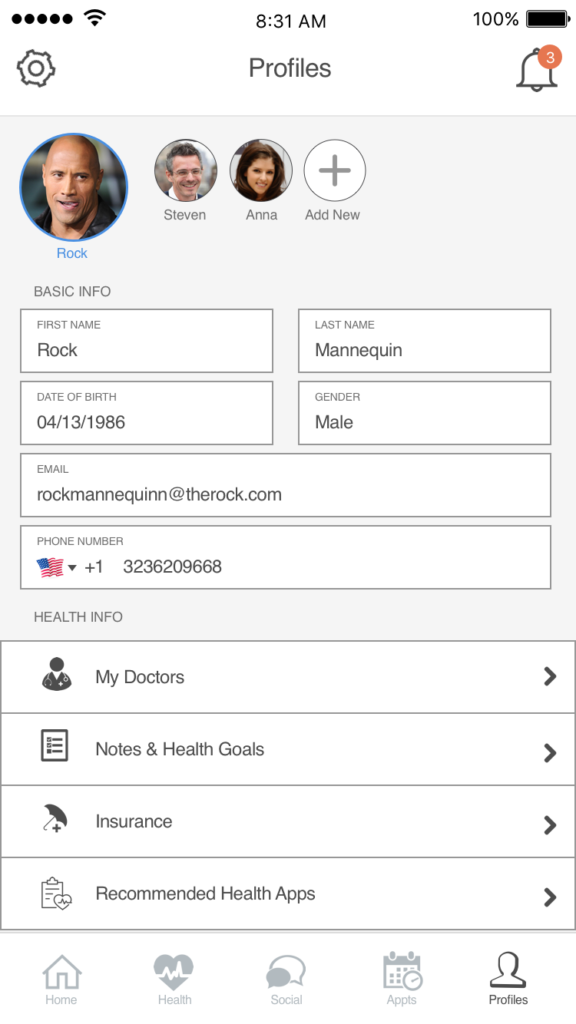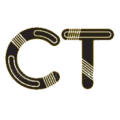
Maximizing Heal Gross Profits
January 22, 2018
Background
Dr. Renee Dua, Founder and Chief Medical Officer’s mission: We want to be your family’s first choice for healthcare. When you’re sick or when you’re well, Heal was created to make it easy and affordable to see a great doctor on your schedule.
Heal allows people to book doctors for house calls via their mobile or web app. It acts as its own private practice, hiring full-time doctors to fulfill house calls. It has both a web app and mobile app designed to take requests.
Goal
While Heal’s mission is to make access to good healthcare easy and affordable, as an on-demand service company, there are profitability metrics that should certainly be a goal since the service currently only costs $99 for on-demand doctors. Thus, I propose the goal of the company should be to maximize defensible gross profit over a five-year time horizon, as opposed to a shorter time frame. The longer time horizon allows Heal to truly highlight the core value we bring to users. In the rest of this document, I will analyze the current app and make proposed enhancements, including introducing two additional revenue sources, so as to maximize this metric.
Initial Analysis
Below I take a brief look at the users and use cases as well as competitors to conduct a brief analysis of Heal’s offering and competitive positioning.
Users and Use Cases
The users of Heal could be anyone, since everyone would like to see a doctor at some point. Heal identifies top visit types as sickness, injury, physical, Tdap vaccine, well-child care, and flu shot. However, this describes only a subset of its use cases. To dive into the primary reasons why people use Heal, I read customer feedback from a variety of sources:
- Yelp reviews (https://www.yelp.com/biz/heal-los-angeles-2)
- iOS App store reviews (https://itunes.apple.com/us/app/heal-on-demand/id961252579?mt=8)
- Android App store reviews (https://play.google.com/store/apps/details?id=com.getheal.patient&hl=en)
- Product Hunt reviews (https://www.producthunt.com/posts/heal)
Here are the major insights I found from these sources:
- Good feedback:
- Care during atypical hours (i.e. nights and weekends)
- Convenience in time (i.e. saving commute time and waiting time)
- Convenience in comfort (i.e. waiting rooms are uncomfortable)
- Health (waiting rooms can have many germs)
- Improved checkup quality due to better contextual knowledge (i.e. where you live, how you live, wearables)
- Bad feedback:
- Doctor variety (i.e. having to see multiple doctors because any single doctor is not on call)
- Customer service (i.e. poor response when doctors aren’t scheduled or something goes wrong)
Competitors
I viewed the apps and conducted analysis on several Heal competitors:
- Healthtap (24/7 live video chats, curated checklists for health goals, feed)
- Pager (24/7 chat with a nurse, book nearby doctors, fill prescriptions, get lab results)
- Dose (onsite employee healthcare clinics)
- Doctor On Demand (adds psychologist and pharmacy, shows doctor profiles, tab bar)
- DispatchHealth (raised $31MM 09/2017, house call mobile app, similar but in different areas)
- AmericanWell (founded in 2006, has app, tons of great reviews, seems to focus on video visits)
- MDLive (founded in 2009, virtual physical and behavioral care)
- Talkspace ($32/week for unlimited access to a licensed therapist via chat)
Below are two of the key differences I found:
- Some competitors (DoD) includes mental health professionals as well as doctors
- Some competitors (HealthTap & Talkspace) focus on video chat or text with health experts
- Some competitors (DoD) include the ability to add pharmacies and lab tests
Based on this initial analysis, I think the messaging can be approved to highlight the benefits of the app and that Heal can explore some of the areas in which its competitors have found some success. Since consumers prefer to stick with the same doctor, and since doctors come to Heal to practice a “better brand of medicine” and have “closer relationships with their patients,” there are a variety of ways the app can be designed to better support the doctor-patient relationship while improving Heal financial metrics.
Proposed Changes
Improvement Reasoning
After initial analysis and viewing the current app in Appendix A, I thought of functional enhancements for the app and what it could look like a few versions out to increase gross profit. While some features aim to better the patient’s relationship with her doctors and other patients, others seek to reduce the friction that exists in the increasingly complex healthcare industry. Heal could be the one-stop portal for any individual’s customized health and wellness needs.
To increase customer retention, I propose additional functionality:
- The ability to book recurring sessions
- The ability to view a health dashboard where goals can be set and progress can be tracked
- The ability to join support groups and chat with members
- The ability to consult with doctors via video chat and text
- The ability to view doctor’s notes on sessions, and to view lab results and prescriptions
I hypothesize that these proposed functionality enhancements would likely lead to increase customer retention will also increase the monthly transactions / customer as well as willingness to pay (which affects price) as customers become more emotionally invested in the product, their doctors, and fellow support group members.
An additional feature I propose to increase gross profit / customer is to implement a freemium model on doctor consultations. According to the Bureau of Labor Statistics (BLS), doctors were paid an average of $89 / hour in 2016. So, let’s assume $90 / hour is the figure to beat. If Heal takes 25%, that means gross revenue for an hour needs to be $90 / (1 – 25%) = $120 to be competitive for a doctor’s time. That said, an example freemium model may allow customers to send 3 texts and coordinate 1 video call (max 15 minutes) with their primary care physician (main doctor) on a monthly basis. This would also allow customers and doctors to form a tighter relationship. Anything over this amount to that doctor, or communication with other doctors requires users to pay a subscription of $149 / month. The limitations, in this case, could be extended to 20 texts and 5 calls each month. If we assume text responses takes a doctor an average of 30 seconds and video calls take an average of 10 minutes, then the hourly rate charged for this subscription would be exactly $149. Of course, we would be making a bet that users would go over their free limitation. Alternatively, we could take the more safe approach of charging $120 / month subscription, but then I fear many users will not try the service.
Lastly, to increase the number of customers, I propose a couple of core feature that I hypothesize will significantly increase referrals. While it is crucial to always be practicing growth tactics and to acquire new customers, I will focus on the core feature here:
- Support groups will allow people to emotionally connect with the product, whether seeking support for a condition or seeking support for achieving a difficult health goal. This social function will naturally lead to word-of-mouth growth as people discuss with their friends and family.
- App recommendations along with the connections of wearables will lead to increased word of mouth as Heal becomes the referring party to all the other niche health apps and other apps refer to Heal. This could also lead to creative marketing partnerships where we can grow the market.
Lastly, I hypothesize that app recommendations can turn into a third revenue source. In Appendix B, the second tab shows a health dashboard where users can set health goals and track progress. This can also turn into a health app platform where apps are recommended to achieve goals. Heal could make money by either charging companies a fee to be on the platform or by creating a revenue-sharing arrangement.
Functionality & Design
View Appendix B to look at the proposed designs. The functionality is described below:
Tab 1: Ability to book a new session and rebook seamlessly
- Booking a new session
- Rebooking a session
- Showing the next upcoming session
- Ability to contact customer support
Tab 2: Ability to view health status and progress, and actively work toward health goals
- Ability to connect to wearable devices
- Ability to view health status
- Ability to set health goals and progress
- Ability to toggle among user profiles
- Ability to view recommended apps to help achieve health goals
Tab 3: Ability to chat with your doctor (video or text), and charge for it. Ability to chat with others.
- Ability to buy communication with your doctor whether video or text (Freemium model)
- Ability to join support groups
- Ability to chat with people found in support groups (competing with Whisper)
Tab 4: Ability to view past and upcoming sessions
- Ability to view past sessions
- Ability to view upcoming sessions
- Sessions include doctor appointments, lab test appointments, and video calls.
Tab 5: Ability to view profiles and settings
- Ability to view profiles and toggle among user profiles
- Ability to view settings
- Ability to view lab test results and medication
- Ability to view prescriptions for medication and have recommended medication
Risks to Implementation
There are a variety of risks that come with the potential benefits proposed:
- How will insurance accept text and video consultations? Could that be covered?
- Maybe people do not want support groups or are better served by in-person support groups
- Users may use the free version of the consultative chat, but not be willing to pay for it.
- Consultative video chat has proven difficult as many startups have tried, but failed. Maybe people would never use text or video consultations entirely
- Building new features come at the expenses of penetrating deeper in a niche market. Competitive strategy should continually be assessed.
- Creating and maintaining a recommended health app database is quite laborious operationally. Ways to scalably partner with apps and maintain the database should be continually assessed.
To mitigate these risks, I would research as much as possible and discuss with industry experts before testing these assumptions. Ways to test assumptions include customer interviews, surveys, A/B tests, and InVision usability testing . We don’t want to build anything that people would never use.
Metrics, Revenue Model, & Financials
There is a long list of financial and product metrics that should be tracked to ensure success. However, below are the monthly KPIs I would look at:
- Revenue
- Gross Profit
- Gross Profit / Customer
- LTV
- Sign Up-First Book Conversion Rate
- Monthly retention
I propose the revenue model not only includes in-person house calls, but also text and video chat consultations as well as fees to health apps.
Any given feature has real costs. I would work with engineering and operations to prioritize so that we deliver the maximum value quickly and cost effectively.
Appendix A – Current Heal App Screenshots
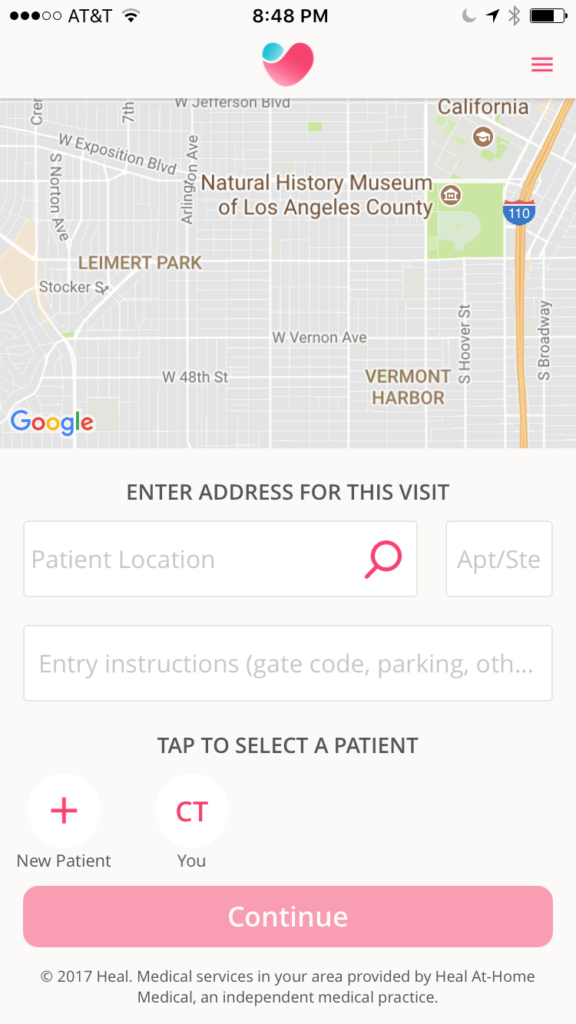
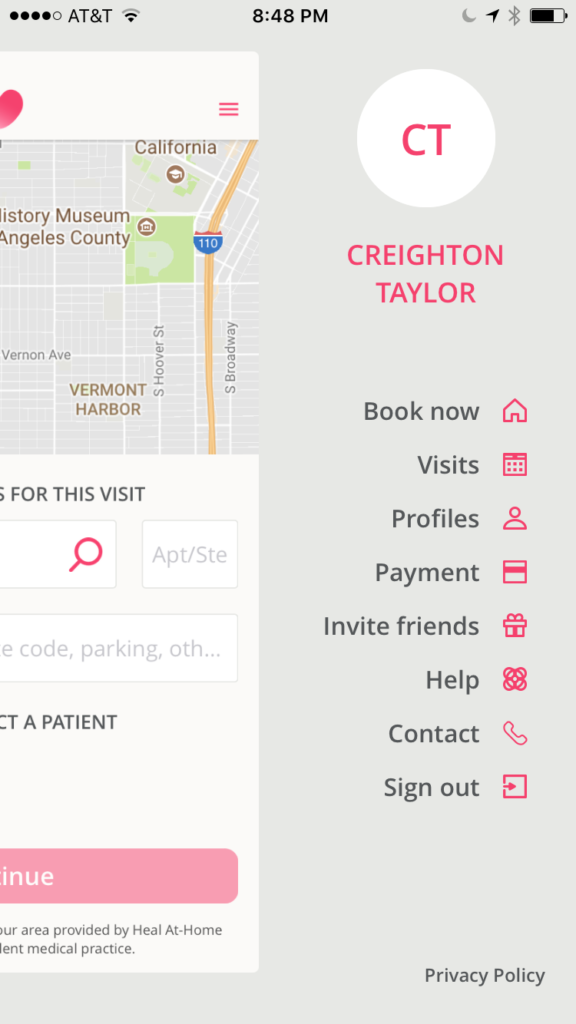
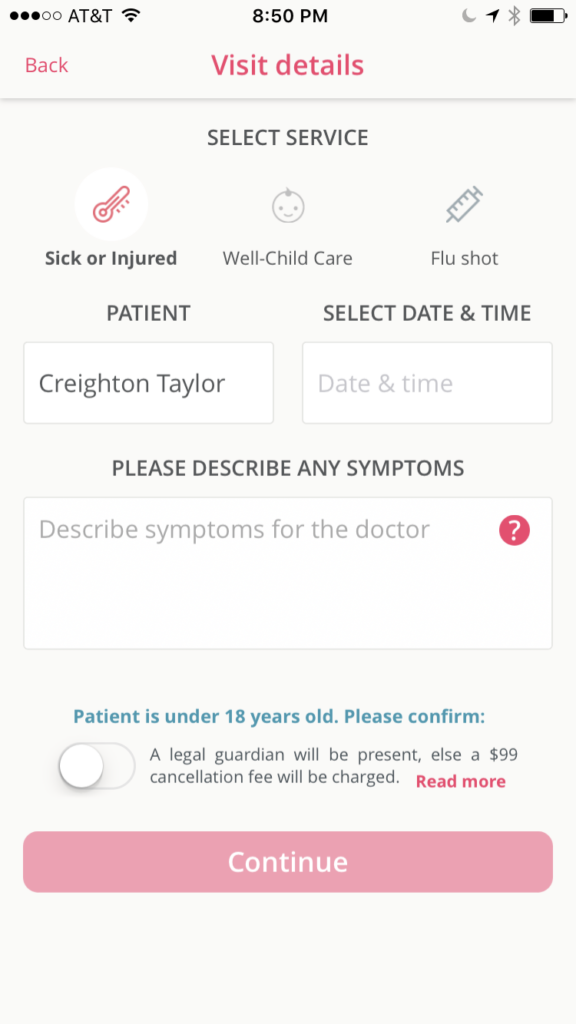
Appendix B – Proposed Heal App Screenshots
